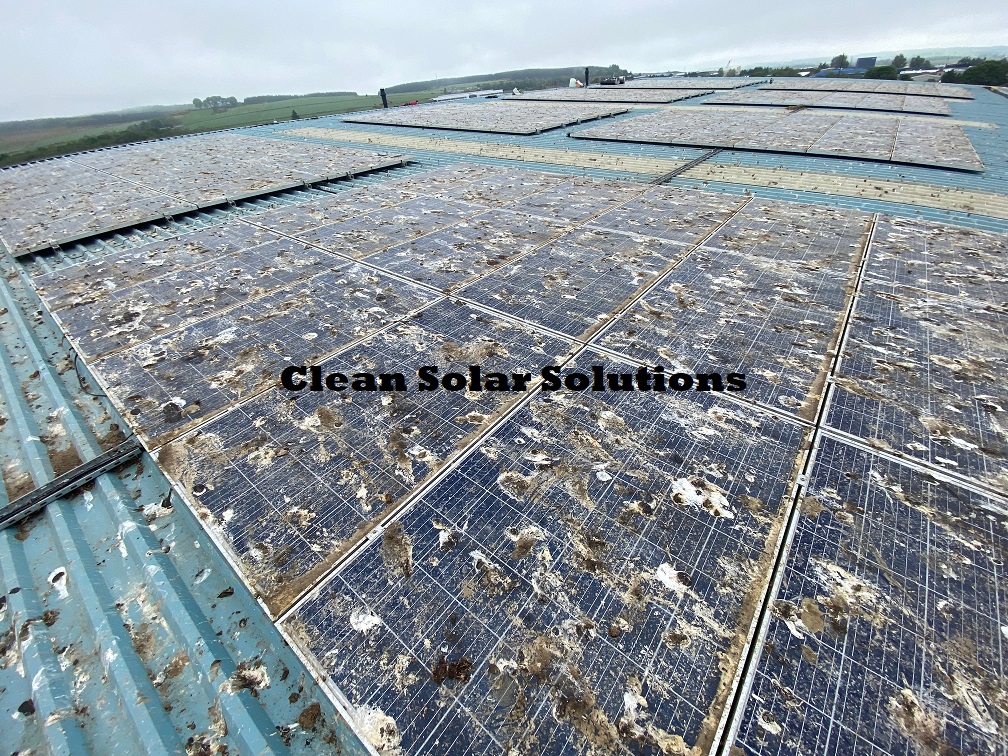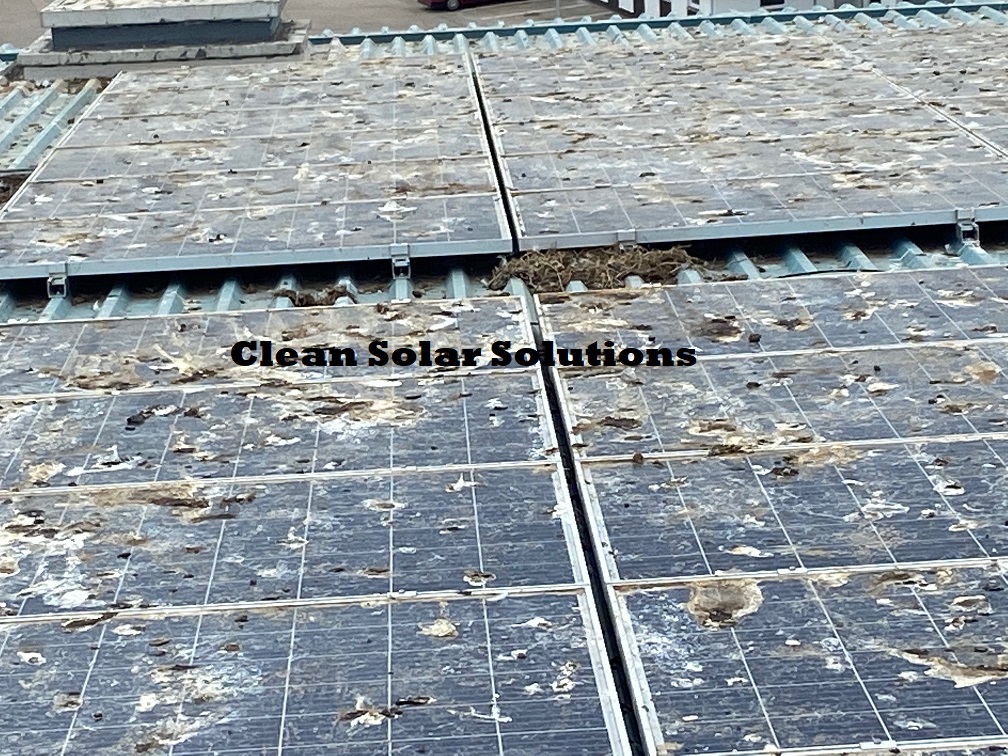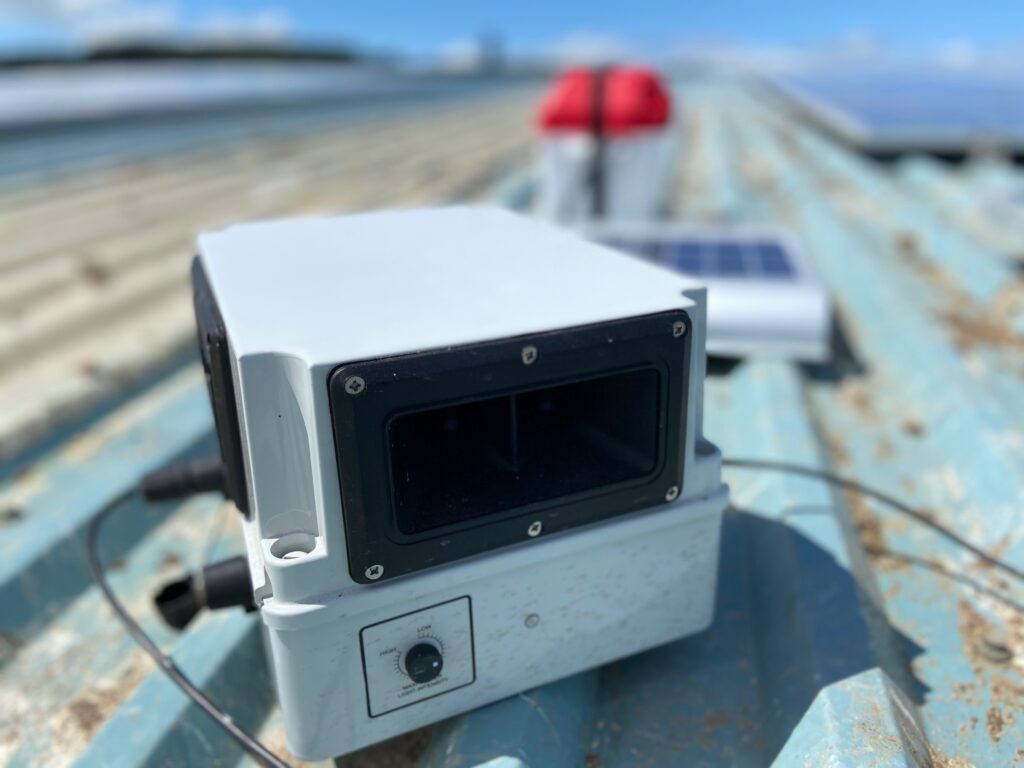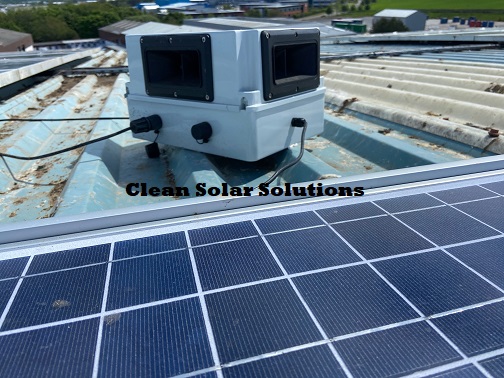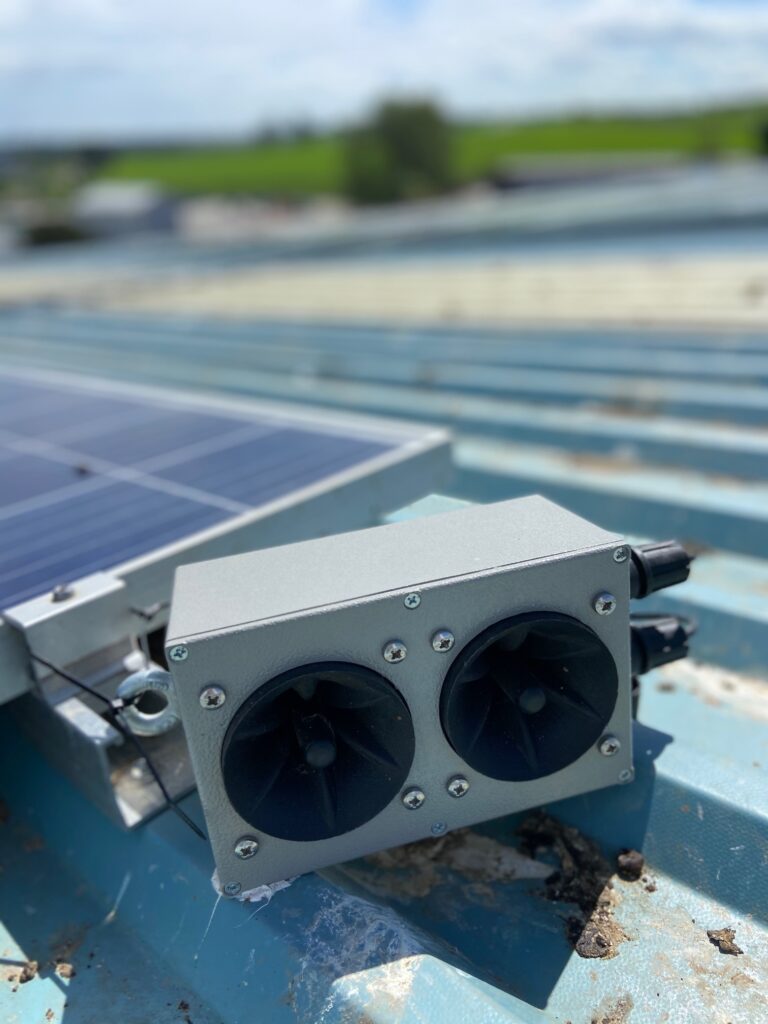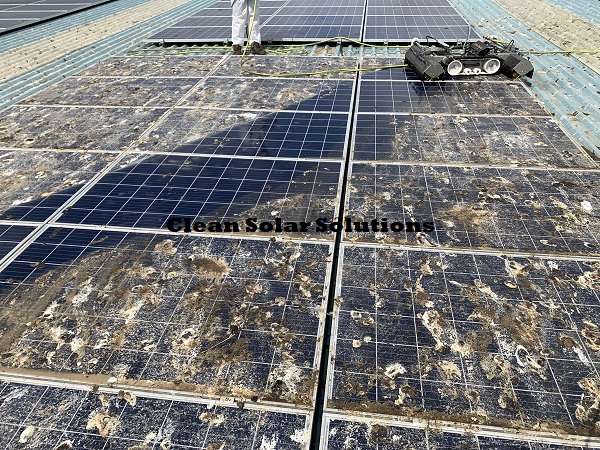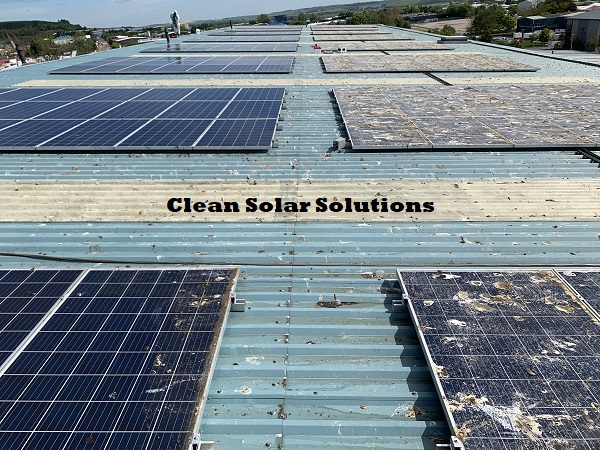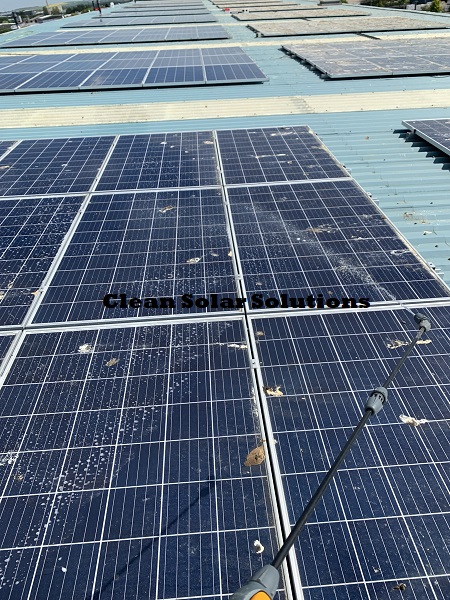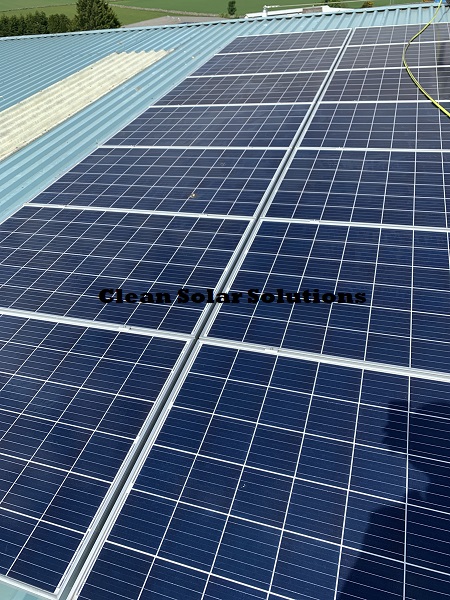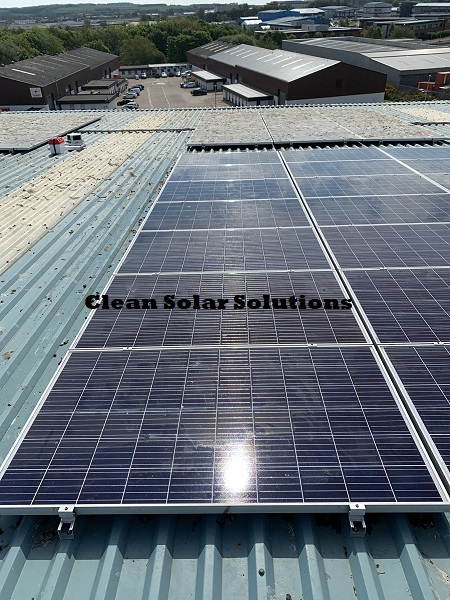We have just completed the solar panel cleaning in Aberdeen, on possibly the city’s dirtiest solar panels. If they are not the dirtiest, they certainly rank up there! This 90KW solar array is located on the Kirkhill Industrial Estate in Dyce.
Why Did These Solar Panels In Aberdeen Need Cleaning?
As those in the solar rooftop O&M industry will know, seagulls can be huge issue and create a lot of damage and mess on solar arrays. As a result of the seagulls, this system’s performance ratio (PR) had fallen by a whopping 62%! Nesting seagulls were obliterating the performance of the system with copious amounts of droppings. Moreover, they were also pulling at DC cables and creating nests around MC4 connectors. This creates a high risk fire hazard.
What Could Be Done To Increase The PR?
Increasing the PR of the system was essential, otherwise the owners of the solar panels would struggle to get the return on their investment. Firstly, reducing the bird activity on the roof was of utmost importance. This could be achieved with the installation of a high quality bird deterrent system. We fitted a Maxi Wailer head unit with 4 built-in horn speakers and 4 satellite speakers. The system creates zero shading on the solar array.
Secondly, a chemical clean was recommended in order to remove the bird droppings and the shading they create.
How Does The Bird Deterrent System Work?
The Maxi Wailer is a solar powered, programmable bird deterrent that belts out 96 different audible and ultrasonic sounds. It has an adjustable in-built light sensor, so works only during light levels set by the installer. The main unit can be programmed to have random sounds, random blast lengths and random blast times. With a speaker on each side, birds are hit from four differing angles with the sound from the main unit.
In this instance, we were not looking to keep the birds off the roof entirely. We were looking to protect a specific zone, i.e. the solar array. So we set up our deterrent accordingly.
The main unit was placed as centrally in amongst the array as possible. Due to the solar array design, we could place it plum centre.
We positioned the central unit at a 45 degree angle to the panels. With a speaker on each face of the central unit, this sends sounds directly towards the very corners of the array. The two intermediate speakers were placed centrally, midway between the main unit and the sides of the array, facing towards the main unit. Should a seagull land between the speaker and main unit, they will be hit by a stereo-effect hostile noise. It will hit them at a 90 degree angle and 45 degree angle, which will cause them to flee.
The end satellite speakers were placed at the extreme sides of the array, midway between top and bottom of the array. Again, these speakers were pointing in towards the intermediate speaker and central unit. This again creates a stereo effect that the seagulls do not like.
Overall with the speaker positioning, we created a hostile zone within the confines of the solar array which will reduce bird activity on the solar panels.
What Will Cleaning The Solar Panels Do?
Firstly, cleaning the solar panels will increase PR immediately. With the system operating with a 62% PR loss, the cleaning will more than pay for itself. Judging by the before and after photos of this array, we would expect the PR to return to over 95%.
Secondly, we are protecting the cell life in the panels for the long term. Shading creates hotspots on arrays and these reduce output. The overheating reduces cell life and can cause cells to fail irreparably. This will again reduce the system output for the long term.
By cleaning the solar panels, output is increased, revenue increases and cell life is maintained for the long term. What’s not to like?!
Conclusion
Maintaining rooftop solar is important. Bird droppings create huge losses on systems if left unchecked. The impact of birds should be a consideration of all solar array designers. Future proofing the system from birds during design and installation phase could save you thousands in lost revenue and damage to your system. The fire risk of nesting birds should also be considered. Prevention is always better than cure with birds and solar arrays. Fitting bird deterrents from day one should be on the agenda with a lot of solar arrays. This coupled with a regular solar panel cleaning regime will keep the system running to a high level of output.
If you require solar panel cleaning in Aberdeen, or bird deterrent fitting, please contact us.

